Five years after the jolt of Seamus Heaney's unexpected death we are back at a moment. Back with Heaney, whose poems resonate with the rhythm of the lives of those he touched – casual reader, familiar student, his close-knit family. The public, the private; at this moment, two interlinked events. Nobel laureate and beloved public figure; family man and generous friend. The archive of work he donated to the National Library of Ireland in 2011 is being spun into a significant exhibition. And his family – his wife, Marie, and three children, Mick, Chris and Catherine, long adults now – have chosen 100 poems from his life's work for a collection. Because they have made the selection, the poems echo publicly and privately. This is a moment all right, after an interval, luxuriating in his words.
Mick Heaney, who is also this newspaper's radio critic, talks about looking at his father's poems again and making these choices now. "To the general reader, which would include me in poetry terms, 100 poems has you well covered. But also, in the process, a poem can spark different things, and you can be drawn in for different reasons."
Listen Now Again focuses on the poetry, its genesis and its process, with glimpses of the essayist, playwright, translator, professor, literary critic and family man
The new exhibition, Seamus Heaney: Listen Now Again, will be the first at the new cultural and heritage centre in Bank of Ireland's former parliament building on College Green in Dublin. More than 100 people have worked on the show, which is curated by Prof Geraldine Higgins for the National Library, with the family included in the process.
It focuses on the poetry, its genesis and its process, with glimpses of the essayist, playwright, translator, professor, literary critic and family man. The aim is to create an intimate and immersive experience of the poet’s work, and the thought and care the National Library team have brought to the task shines through.
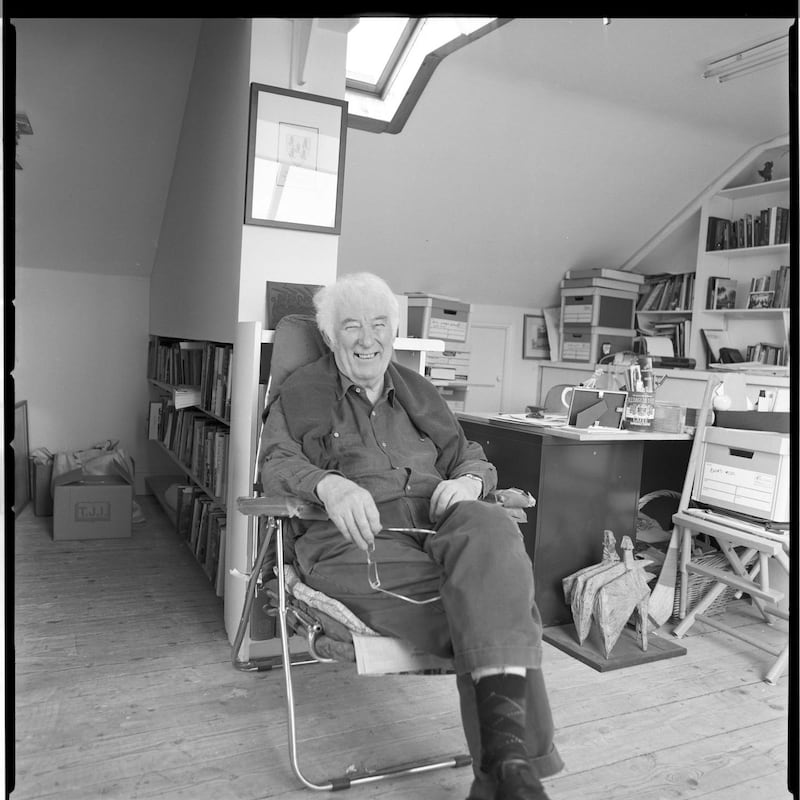
The library's director, Dr Sandra Collins, says at the core of the exhibition is "the idea of transformation – from earth to air, dark to light, beginnings to completion, and the everyday to the extraordinary – and the sense that language has a transformative capacity that can help us 'listen now again' to our world and our surroundings."
His family, too, picked up on this trajectory of his life and work, from earth to air, in choosing the works that make up 100 Poems. "We didn't set out to exactly mirror that, but it's there in lines like 'Walk on air against your better judgement', or waiting to 'credit marvels'," Catherine says when I meet the siblings. Then the three are one, teasing it out while tumbling one over the other. Chris: "The thing in the popular imagination is true – it's just more airborne towards the end. The first poem in the first book is Digging, and it ends up: 'walk on air'."
The last poem in Heaney's final collection of poetry, A Human Chain, is A Kite for Aibhín; it is second last in the family's selection. Catherine: "Without any of us plotting that, least of all Dad, who didn't know Human Chain would be his last book, that earth-to-air thing is undeniably there."
Chris: “It’s bookended by digging and a kite.”
Catherine: “Shivery.”
And then they talk about what they refer to as his last last poem.
Mick: “My second daughter was 2½, and between one thing and another there hadn’t been a poem written about her, and my mother, I think, said to Dad . . .” Catherine laughs and says, “. . . it’s about time.” Chris: “Parity of esteem and all that.”
"So," Mick continues, "he was watching the Proms on the BBC, and he went up and he wrote this poem, and he came round to our house the next day and he gave it. And it's lovely. It's called In Time. It's to the music. But he died two weeks later. So 'in time' suddenly meant he got it in just under . . ."
Chris: “It was on his desk.”
Catherine: “It was the last poem he ever wrote.”
There is a pause.
Mick: “That’s where it’s a family selection. As work in the canon goes, it wouldn’t be one of his major works, but it’s massively significant.”
Chris: “Mum says she saw him watching the Proms, and his fingers.” He taps on the side of his armchair. “She says she could sometimes tell: he’d be tapping the fingers, which would be metre, rhythm, working out the line, the syllables. She’d look and say, ‘Ah, there’s something going on under the bonnet.’ ”
So each of his three granddaughters – Mick's Aibhín and Síofra and Chris's Anna Rose – has a poem. What a picture of life in a Nobel family it paints.
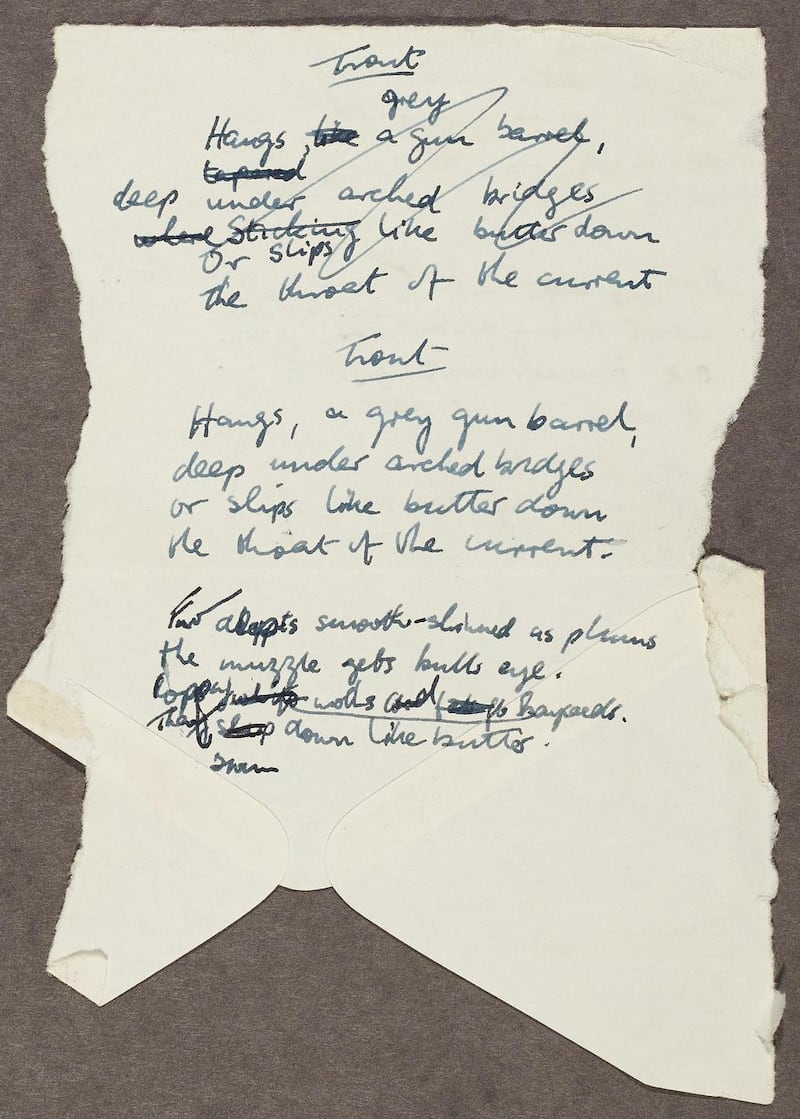
In choosing, the family took his 12 collections (excluding "the Beowolfs, the Sweeneys and all the one-offs"), 460-odd poems, and they sat down and made their cases. Catherine "very unpoetically did a spreadsheet, breaking it down into the number of votes for each poem".
There was initial trepidation, and they each brought different associations; the exercise was ultimately “actually incredible”, Mick says; for Catherine it was “an amazing experience”. The first 70 or 75 almost self-selected, they agree, and it was in the final 25 the choices became more significant.
For the Heaneys, making the choices – “there was the personal resonance and the poetic,” Mick says – was clearly moving.
Catherine: “Having gone to readings all our lives, I hear the poems. I hear them in his voice.”
Mick: "It was an oral thing with us. And there's been so much stuff about Dad, all of it great. The HomePlace" – the Heaney centre in Bellaghy, the Co Derry village where the poet is buried – "and now this tremendous undertaking by the National Library. There's something about choosing 100 that – it's just poetry. It's what he loved, it's kind of unfiltered, unmediated. And if there's any mediation it's us, saying, 'This is what we like.' "
Chris: “Everything flows from it. He was a public figure, but ultimately, what’s on the page, that’s what all of this stems from, and it’s good to be reminded of that sometimes.”
Mick: “I certainly sometimes forget. It comes back to the work.”
The poem Night Drive was not on everyone's list, but, Mick says, "Mum just went: 'I want Night Drive.'
Catherine: "She had the casting vote. And also Twice Shy, which was a very early love poem which I don't think has ever been anthologised before. Mum loved it because, I think, it was one of the first, so it's not The Skunk or The Otter or Tate's Avenue" – which are in 100 Poems too – "or any of the more well-known love poems. They all chime, variously – and there were a lot of them. Mum might have had a few more."
"It wouldn't really be a major poem, but we all wanted The Gravel Walks," Mick says, "because it includes the line on his gravestone, "Walk on air against your better judgement."
There was certain amount of notice . . . He was a well-known poet. But . . . he was a well known <em>poet</em>! He wasn't a footballer or a politician
Catherine sees readers coming upon the line “They might not know why, but we know.”
He quoted it in his Nobel lecture, Chris says – “ ‘I’m allowing myself the luxury of walking on air.’ It’s a great kind of philosophy.”
Mick: “It’s the pay-off line. It sort of sums up . . .”
Chris: “Walk on air against your better judgement – it’s kind of: be brave.”
So is that how they all operate now? There is a general roar of laughter.
Chris: “No! That’s why in theory it’s a great philosophy.”
Catherine: “Well, Dad was pretty earthbound himself. It was an instruction to himself. The ‘better judgement’ part.”
Mick: “He didn’t quite have the glass-half-empty view I might have, but, equally, even as he looked forward, he wasn’t a natural ‘everything is going to be great’ person.”
Chris recalls a comment his father made, on television about Barack Obama: “He said something like, ‘I’m wary of too much uplift – though in Obama’s case I can pretty much get behind it.’ ”
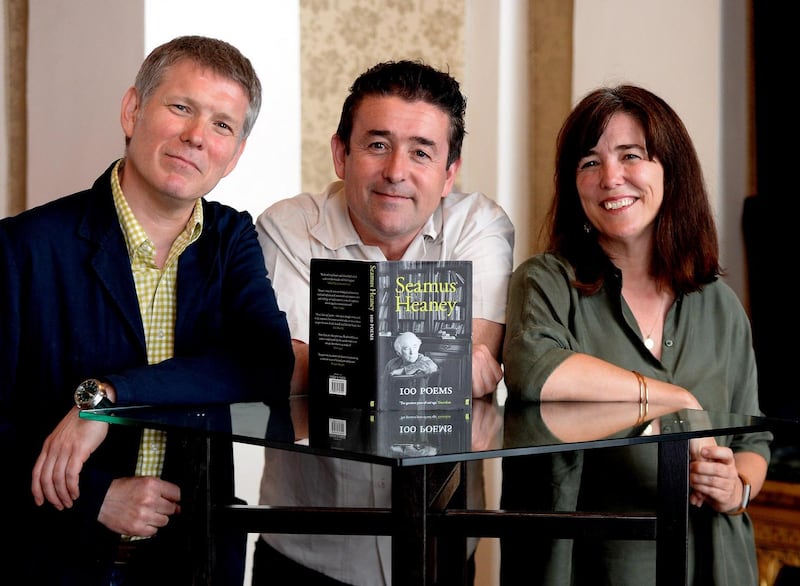
Public versus private
Heaney was undoubtedly the best-known living Irish poet for decades; he became almost public property, and everyone felt they knew him. As children were they conscious of this?
Mick: "There was certain amount of notice . . . He was a well-known poet. But . . . he was a well known poet! He wasn't a footballer or a politician."
Catherine: “So much of it became about Seamus Heaney the man, and he bore that with grace. A lot of people knew him and might have sat down with him who might not necessarily have read a book of his poetry, which I’m not saying they should. But it’s good to bring it back.”
Chris: “He had another life, as a public figure in Irish life and as a teacher. But in this media age he was a guy that people knew who possibly had never read his poems. And that’s rare enough.”
Was the familiar public man the same one his family knew?
Catherine: “Sometimes people projected something on to him, but really there was no difference between who he was out there and who he was as a person.”
Although Mick recalls thinking, after some interaction as a “recalcitrant teenager”: “You’re not the person doing that reading!” But all the same he comments: “Some people saw him as a sort of benign, slightly unquestioning, kindly uncle. Even if he said nothing – perhaps especially if he said nothing – that was . . . I wouldn’t say he judged people, but he knew what they were at.”
Catherine: “He could take the hard line if he had to. And he kept his counsel.”
Their mother told them an old colleague at Harvard said Heaney didn’t judge but always took the measure, and for them this is spot on. Chris: “The antennae were always up, taking it all in. And observation is at the root of so much poetry. His recollection, the taking in of stuff and retaining it.”
Catherine recalls "massive smiley photos" and says that sometimes the image of him as constantly beaming and affable "could be a bit overdone". Mick says some misread him as unquestioning. "The whole point about it was that he questioned everything . . . Some people occasionally misinterpreted the public politeness and civility for something else, for being a yes-man. He was aware of that. He was naturally civil and polite and courteous. He had a pretty good instinct to know if someone was . . ."
Catherine: “He was nobody’s fool. People who overstepped the mark: if you knew him you could see the shutters come down – that person doesn’t know it, but they should stop now.”
They are not specific about who they’re talking about, but “if people were being pushy, not just to him but to other people . . . He didn’t like bullies.”
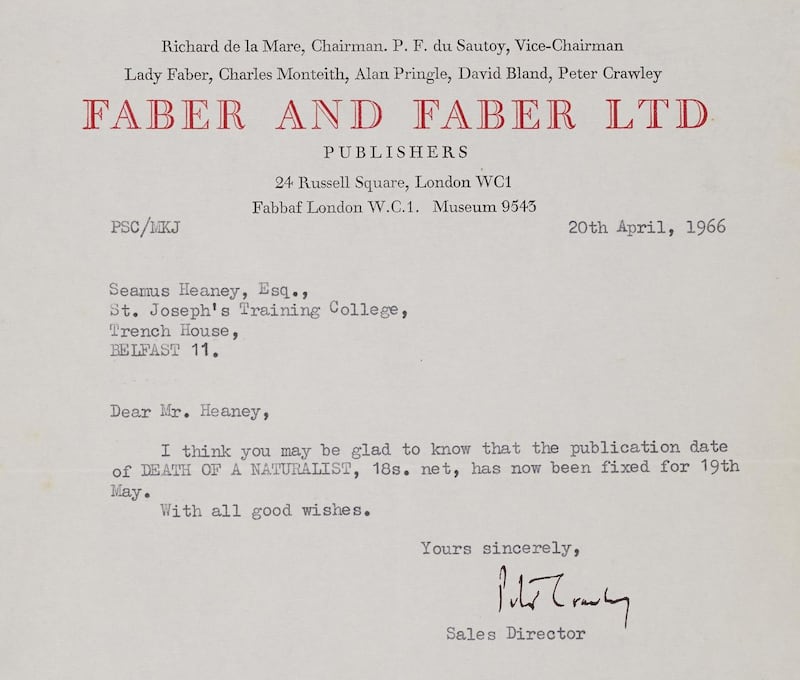

Part of the public persona is down to the fact that he’s now on the Irish curriculum, although he wasn’t when they were at school. (Even so, people tell them their dad turned them on to poetry when they studied him for their A levels.) Catherine recalls the oddness at high school in the US, aged 14, when Heaney was teaching at Harvard, of “answering an exam question on a poem by Dad about my grandmother”.
For Chris there was “a sting in the tail” in his Spanish finals, when he had to translate some literary criticism by his father into Spanish. The professor came in and commented: “As for question one, well, you know who to blame!”
Catherine says she was a "middling English student – the only one of us who did English. The third week of first year Dad arrived with a stack of Tamburlaine, Paradise Lost, and Michael said, 'I've just remembered why I never did English.' "
At the time she didn’t think about the pressure, “but I think if I were doing it all again I might do a language – not because I was scarred by it; I just wasn’t the most natural English student. History of art was my major, and I absolutely loved that.”
Their father was very much around during their childhoods, although “he wasn’t particularly a changing-the-light-bulbs kind of dad”. Nor a let’s-go-to-the-beach or kick-a-football kind of dad. Mick: “He wasn’t sporty. But, luckily, neither were we.”
It wasn't all highbrow at home. Seamus and Marie loved Midsomer Murders. Mick: "He might pass through the room and ask: 'Is there any police drama on?' "
Catherine mentions the subject of Homer coming up, “and he wasn’t talking about the Greek poet. He was very much clued in. He was not an ivory tower.”
But pop culture passed him by, as Mick laments. "He met Mick Jagger. He was just a guy. He knew he was famous." But "Czeslaw Milosz, the 86-year-old Polish poet, he was like One Direction for him – not quite, but he was really excited. And he was a friend. He wasn't nervous meeting him, but when he introduced him to the family it was the nearest thing I saw to him showing the priest around. 'Here are our children.' His reverence was for poetry, above all."
He was “kind of amazing, and he was good fun”, Catherine says.
Chris: “That’s often overlooked. He was such good company, and had a sense of humour, which is a refined form of intelligence. There was a lot of laughter. He had a wicked sense of humour in private.”
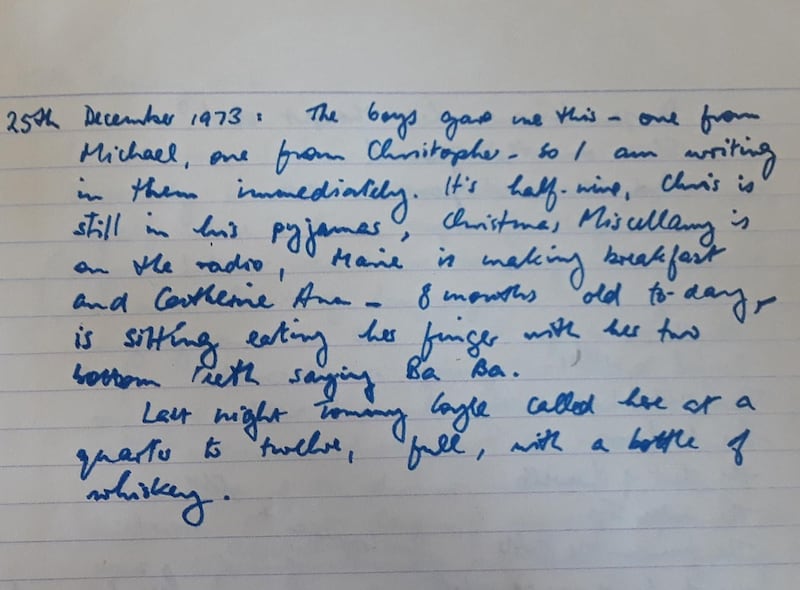
Personal poems
A Hazel Stick for Catherine Ann has resonance for Catherine, "not just because it's dedicated to me, but also it talks about going for a walk, which we all remember on a family holiday in France in 1981. It's not just something on the page but it's very directly linked to a memory of a certain moment, and seeing a glow-worm, a little neon light in the ground, and thinking, That's not natural."
For Chris A Kite for Michael and Christopher, and Route 110 for his daughter, Anna Rose, are special, but he also mentions one that didn't make the final selection – The Sounds of Rain, dedicated to the scholar Richard Ellmann, with memories of a torrential night in Cambridge in the late 1980s – and Catherine's one that got away is The Little Canticles of Asturias: "I couldn't recite a line of it now, but it does reference a long, hot, bothered family drive from France into Spain."
Mick loves Keeping Going – "In a way that's personal, because it's about our uncle who has had a lot in his life going on" – and the others agree.
In sequence after it, both in The Spirit Level and in 100 Poems, is another powerful work, Two Lorries. Catherine: "An extraordinary poem, and it's a sestina" – a complex verse form – "so technically it's incredible." She recalls her father introducing it: " 'I have a lot of poems with fairly unromantic titles, but this really has to be the most unromantic.' "
It is emotional, they agree, to read about the 'twilight years' and about 'going back to the writing that inspired him early on'
Mick also mentions In the Attic, in part because the attic of their family home is where his father worked and in part because it begins with a reference to Treasure Island, and "he was always on at me to go and read Robert Louis Stevenson, and I just never really took the bait."
Chris quotes some of the closing final lines.
As I age and blank on names,
As my uncertainty on stairs
Is more and more the light-headedness...
It is emotional, they agree, to read about the "twilight years" – In the Attic is third from the end in the collection – and about "going back to the writing that inspired him early on".
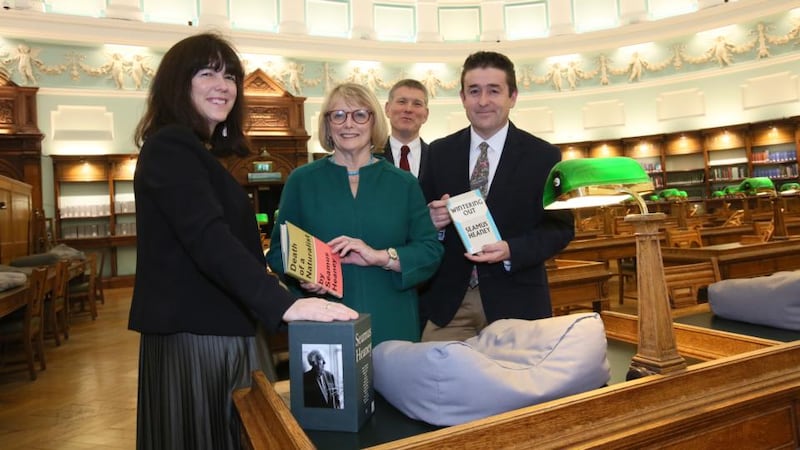
Dr Sandra Collins says the National Library of Ireland wanted "to do something really transformational, to open up this wonderful archive and share it with the world", and it worked with Prof Higgins, director of Irish studies at Emory University in Atlanta (where she curated Seamus Heaney: The Music of What Happens), and Ralph Appelbaum Associates, which designed the exhibition.
Catherine says Listen Again Now has been "an impetus for us to refocus and reconnect, and there are moments – I hate that word 'humbling': people usually say it when they mean 'proud' – but I'm genuinely humbled when I see the work Geraldine has done, who spent a year at the archive in the National Library, going through everything, weighing it up, deciding what's going to be most illuminating, for someone who's read Dad's work for years or is coming to it for the first time. From what we've seen they've done a brilliant job of selecting and presenting it in such a way that it's a living thing."
It's "slightly nerve-racking going into these things", Mick says, referring to the exhibition and to the HomePlace, in Bellaghy. "They're beyond your control in the end, but we've been consulted, and people have been so inclusive and respectful. They have been terrific outcomes. The 100 Poems, in a way this is just us. And it's just him as well. It's where the two come together. It reconnected me to that bit of him that everyone else is so familiar with but which, weirdly enough, I am less familiar with."
He talks about life in their house. “As a family we weren’t sitting round the table and him pulling out the poems. He did with Mum. He read poems to her.”
Catherine: “Mum was the first reader.”
Mick: “The rest of us were kind of the last readers!”
It was his work, and “he didn’t speak about it”, Mick says. “His poetry came into it because poets went through the house so much. But he didn’t sit around reciting poetry. Mum would be more likely to recite poetry.”
Catherine: “Mum recites poetry all the time. She would say that’s because she had to learn it off by rote at school. But she has an absolute natural love of poetry. I think it probably meant we all had healthy relationships, because it wasn’t as if our household revolved around Dad and his work.”
Chris: "No, totally. When Anna Rose was born he did send to myself and Jenny the last section of Route 110, which is about her birth. He said he finished that the night she was born. And the last line in the version I have is different to how it appears in the book. He was constantly reworking. It was nothing to do with me; it was to do with the child's birth. That was obvious, to send a poem. But you never [usually] got, you know, 'Here's something I've been working on.' "
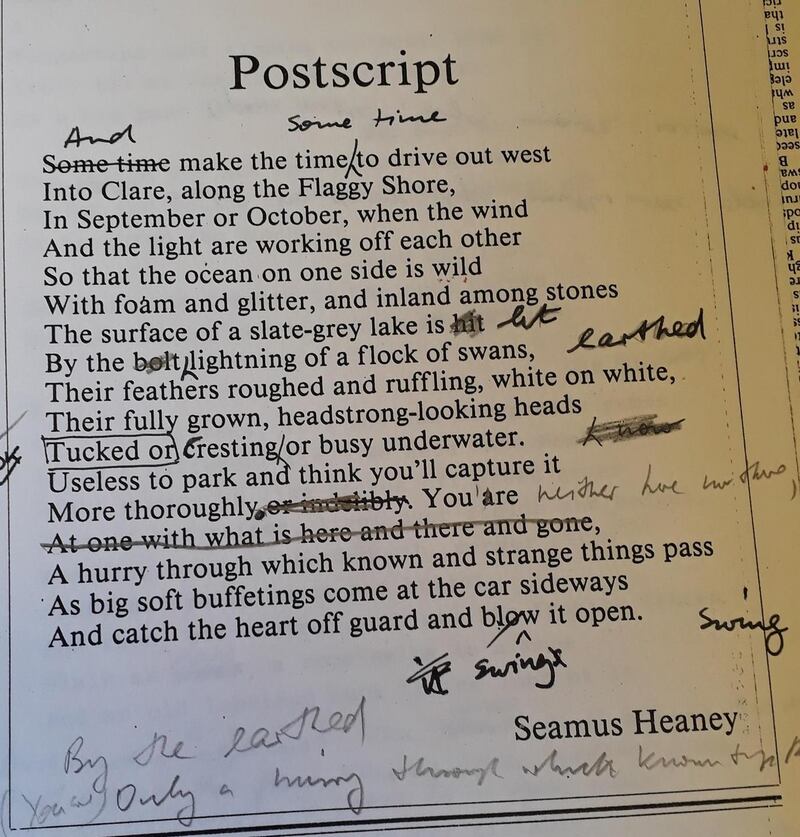
They talk about not sitting down to read the work, “so when you did sit down and read it, thinking, Oh my God this is so . . . big”, Catherine says.
“Often we engaged with it in public readings of his work,” says Chris. “He was a very good reader of his work.”
Mick: "He wore it so lightly that in a way it's only since he's gone that I've started to think about it more and more, and you think about what he did, but also, you go, Well, what have you done with yourself?"
Catherine tells a story about when she 24 and living at home as part of the family's revolving door for adult children. One day her dad showed her something he'd come across in a filing cabinet, a manuscript of a final draft of Digging, "and he had dated it August of the year he was 24. I was the same age, to the week, when he showed it to me, as he had been when he wrote it – and I hadn't written any canonical poems."
They all laugh, as Mick adds: “What’s worse is when you’re 50 and it’s still . . !”
Seamus Heaney: Listen Now Again - What to expect
Four years after it was first announced, the new Cultural and Heritage Centre at the Bank of Ireland complex on College Green in Dublin, will open its doors next week with the first exhibition devoted to Seamus Heaney, the much loved Nobel literature laureate, who died in 2013.
The former parliament building’s lobby from Westmoreland Street opens on to a bright circular atrium with a black-and-white tiled floor, forming the entrance to the exhibition, and introducing Heaney’s 12 collections of poetry.
With thousands of items to choose from – original manuscripts, letters, unpublished works, diary entries and photographs that Heaney donated to the National Library two years before he died – the exhibition frames the narrative in four sections, using some innovative techniques to engage visitors.
The "Excavations" section looks at Heaney's early life and works, exploring memory, history and his own past near Bellaghy, in Co Derry, and the poems that draw on those experiences – "Between my finger and my thumb / The squat pen rests. / I'll dig with it." (Digging, from Death of a Naturalist, 1966)
There’s a focus on the wet, earthy peat of the bog, preserving and remembering everything, and Heaney’s fascination with bog bodies and symbolic use of them to explore the violence in Northern Ireland. A video installation set into the floor will expose layers of earth, revealing bog bodies; in another installation the sounds of his childhood are re-created.
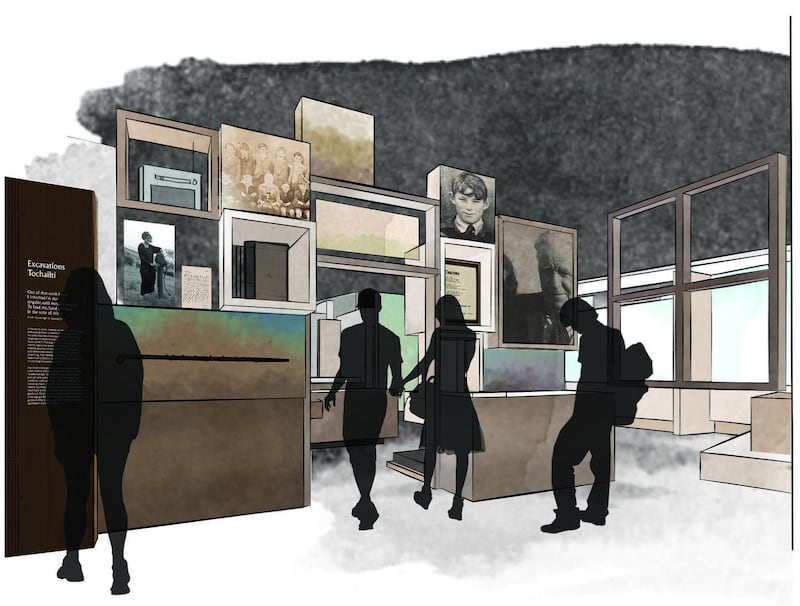
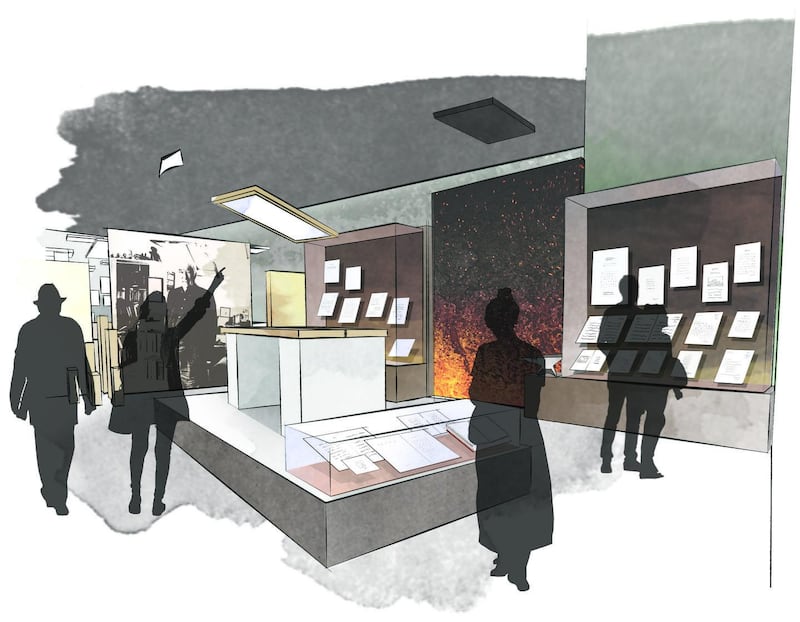
Next, “Creativity” looks at Heaney’s influences – friends, ideas, places, literature – and writing process: how he constructed poems, like forging metal into a new form, a combination of graft and craft. A touch-screen video teases out the process; Heaney’s desk and lamp (which once belonged to WB Yeats) are not yet in place as we watch the exhibition build, but the National Library’s head of outreach, Katherine McSharry, describes the utilitarian affair, supported by two filing cabinets, from his attic study in the family home, with a view of Sandymount Strand.
Some of Heaney's notebooks and drafts (and redrafts, working over the lines) of poems include the key blue notebook, which he wrote about in Stepping Stones (2008): "I remember having this big hardback blue notebook, and starting in on it very deliberately one Saturday morning. That would have been in the autumn of 1965, not long after we'd come back from the honeymoon and moved into our first semi-detached on a housing estate on the edge of Belfast. I was like a pilot standing on the edge of an aerodrome, looking out at the plane he would have to fly. There was a terrific sense of having arrived somewhere, and at the same time a definite anxiety. Would you get off the ground again – and on course – and then get landed again safely?"
The last section of the exhibition deals with his later poetry, resting on the power of human relationships and love, as well as a celebration of new life in his grandchildren
The third strand, “Conscience”, focuses on Heaney’s struggles to write about violence in the North, being a poet in dark times, and his engagement with politics and justice. It seeks to explore the poet seen by many as the conscience of his homeland, whose Nobel Prize in Literature, in 1995, was for “works of lyrical beauty and ethical depth, which exalt everyday miracles and the living past”.
The last section, "Marvels" – "Me waiting until I was nearly fifty / To credit marvels . . . Time to be dazzled and the heart to lighten", from Fosterling – deals with his later poetry, where there is a lightness and uplift, resting on the power of human relationships and love, as well as a new wonder at the world around, and celebration of new life in his grandchildren. It includes the rain stick from their home – a gift from their friends Beth and Rand Brandes, which became the name of one of Catherine Heaney's favourites in 100 Poems, including the words "Listen now again", which form the exhibition's title.
A commission from the street artist Maser – a sculpture of paper transforming into flying birds – marks the exhibition's start, and for the end he reworked his street art on a Dublin wall after Heaney's death. So Noli timere – "Don't be afraid," the words Heaney texted to his wife, Marie, just before he died – closes the exhibition.
The exhibition will eventually transfer to a permanent home in the National Library.
- President Michael D Higgins will open Séamus Heaney: Listen Now Again, and Minister for Culture Josepha Madigan will open the new Cultural and Heritage Centre, on July 4th. The exhibition opens to the public on July 6th and is free; 100 Poems is published by Faber & Faber












